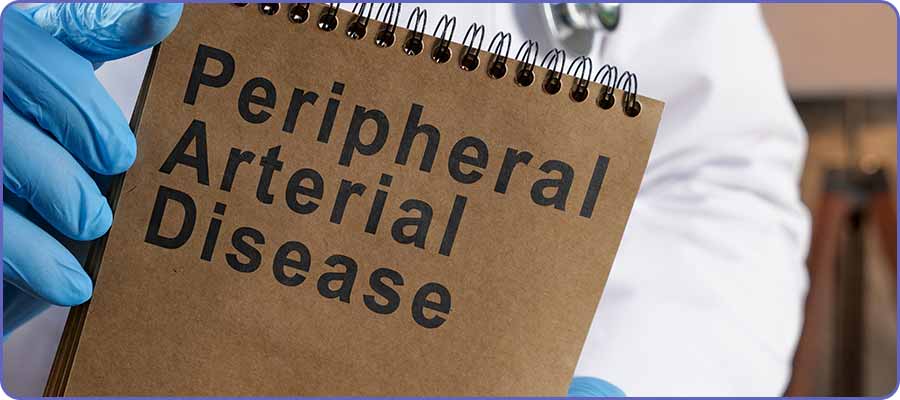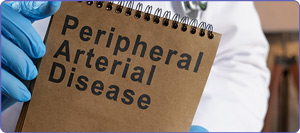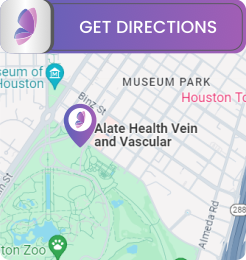What Is Peripheral Artery Disease (PAD) and How Can It Be Treated?
Peripheral artery disease is a circulatory condition characterized by narrowed arteries that reduce blood flow to the legs. Symptoms can include leg pain, cramping, and numbness, especially during physical activity. Treatment may involve lifestyle changes, medications, and in some cases, surgery. If you experience symptoms, consult our board-certified interventional radiologist, Dr. Andrew Doe, MD, for a proper diagnosis and personalized treatment plan. For more information, contact us today or book an appointment online now. We are conveniently located at 1213 Hermann Dr Suite 255, Houston, TX 77004.


Table of Contents:
How does Peripheral Artery Disease (PAD) affect the arteries in the body?
How is Peripheral Artery Disease (PAD) diagnosed by doctors?
What are the common symptoms of Peripheral Artery Disease (PAD)?
How can I prevent the progression of Peripheral Artery Disease (PAD)?
Peripheral Artery Disease (PAD) is a common circulatory problem where the arteries outside of the heart and brain, most often those supplying the legs, become narrowed or blocked due to the buildup of fatty deposits, a condition called atherosclerosis. This narrowing restricts blood flow, which can cause symptoms like leg pain, cramping, or weakness, especially during walking or exercise. Left untreated, PAD can lead to serious complications such as poor wound healing, infections, and in severe cases, tissue death (gangrene).
At Alate Health Interventional Radiology Clinic, our experienced team specializes in the diagnosis and minimally invasive treatment of PAD. Using advanced imaging and catheter-based techniques, our interventional radiologists can precisely identify blockages and restore blood flow, often without the need for open surgery. Treatments such as angioplasty and stenting are performed on an outpatient basis, helping patients quickly return to daily activities with improved circulation and reduced symptoms.
PAD is not just a problem of the legs; it’s also a warning sign of increased risk for heart attack and stroke due to similar blockages elsewhere in the body. That’s why early detection and expert care are critical. We are committed to helping patients manage their vascular health, reduce risk factors, and improve their quality of life through state-of-the-art interventional radiology solutions.
During your visit, our specialists will conduct a detailed physical examination, checking for weak or absent pulses in your legs and feet, listening for abnormal artery sounds (bruits), and looking for signs such as poor wound healing or changes in skin color.
To accurately diagnose PAD, we offer advanced non-invasive testing, including the Ankle-Brachial Index (ABI), which compares the blood pressure in your ankle and arm to detect reduced blood flow that may indicate blockages.
If further evaluation is needed, our clinic provides state-of-the-art vascular imaging. We use duplex ultrasound to visualize blood flow and identify arterial blockages. For a more detailed view, our interventional radiologists may recommend CT angiography (CTA) or MR angiography (MRA) to precisely locate and assess the severity of arterial narrowing.
At Alate Health Interventional Radiology Clinic, our comprehensive approach combines clinical expertise with advanced diagnostic tools to ensure an accurate PAD diagnosis, allowing for the most effective, minimally invasive treatment options tailored to your needs.
One of the common symptoms of PAD is leg pain or cramping during activities. This discomfort usually subsides with rest and returns with movement. Other symptoms may include numbness, weakness, or a feeling of heaviness in the legs. Patients may also notice changes in the color or temperature of the legs and feet, such as paleness, coolness, or a bluish tint. In advanced cases, sores or wounds on the toes, feet, or legs may heal slowly or not at all. Additional signs can include hair loss on the legs, shiny skin, and a weak pulse in the legs or feet. Severe PAD can even cause pain at rest, particularly at night, which can disrupt sleep.
Recognizing these symptoms early is crucial. Our board-certified interventional radiologists use the latest imaging technology to accurately diagnose PAD and offer state-of-the-art, minimally invasive treatments such as angioplasty and stent placement to restore blood flow and relieve symptoms. Our patient-centered approach focuses on improving your quality of life and preventing complications.
If you are experiencing symptoms of PAD, schedule a consultation with the vascular specialists at Alate Health Interventional Radiology Clinic. Early intervention can make a significant difference in your long-term health.
At Alate Health Interventional Radiology Clinic, we are committed to helping our patients manage and prevent the progression of Peripheral Artery Disease (PAD) through a combination of advanced interventional treatments and comprehensive lifestyle support. Our team works closely with you to develop a personalized care plan that addresses both your immediate vascular health and your long-term well-being.
Lifestyle Modifications for PAD Management
One of the most impactful steps you can take to slow PAD progression is quitting smoking. Tobacco use directly damages blood vessels and accelerates atherosclerosis, a primary cause of PAD. Our clinic offers resources and guidance to help you stop smoking and reduce your risk of further vascular issues.
Maintaining a heart-healthy diet low in saturated fats, cholesterol, and salt helps manage cholesterol levels and blood pressure, both key contributors to PAD. Our care team can provide dietary recommendations and connect you with nutrition support as needed.
Regular physical activity is crucial for improving circulation and reducing PAD symptoms. We often recommend supervised walking programs or tailored exercise routines, proven strategies that can help you walk farther with less discomfort. Even moderate, consistent exercise like brisk walking can make a significant difference.
Medical Management and Advanced Treatments
Managing underlying health conditions such as diabetes, high blood pressure, and high cholesterol is essential. Our providers at Alate Health monitor your progress closely, ensuring you stay on track with medications and regular check-ups. If you require advanced interventions, our interventional radiologists offer minimally invasive procedures such as angioplasty and stenting to restore blood flow and relieve symptoms.
Ongoing Monitoring and Support
We emphasize the importance of daily foot care, as PAD can increase the risk of sores and infections due to reduced circulation. We educate our patients on how to inspect their feet and when to seek medical attention for any concerns.
At Alate Health Interventional Radiology Clinic, we believe that close communication with your healthcare team is key to successful PAD management. By combining expert medical care with practical lifestyle guidance, we help you slow the progression of PAD and enhance your quality of life. For more information, contact us today or book an appointment online. We are conveniently located at 1213 Hermann Dr Suite 255, Houston, TX 77004. We serve patients from Houston TX, Bellaire TX, Jacinto City TX, Spring Valley Village TX, Stafford TX, Bunker Hill Village TX, and surrounding cities.

Additional Services You May Need
▸ Adenomyosis
▸ Enlarged Prostate
▸ Leg Ulcers
▸ Joint Pain
▸ Varicose Veins
▸ Uterine Fibroids
▸ Pelvic Congestion
▸ Vascular Malformations
▸ Dialysis/Renal Failure
▸ Port and PICC Placements
▸ Peripheral Arterial Disease
▸ Primary and Metastatic Liver Cancers
▸ Hemorrhoid Artery Embolization (HAE)







